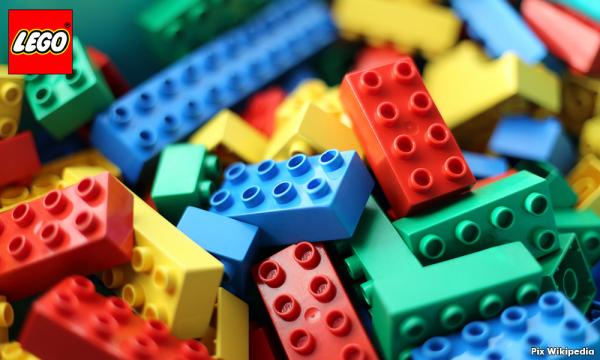My eldest son’s favourite toy is Lego. From his earliest birthdays, he has always enjoyed and appreciated Lego. There was a stage in his life when he and his best American friend, in the Washington DC area, declared themselves as ‘Lego Kings’. Consequently we visited Legoland in 1992.
Lego is a line of plastic construction toys that are manufactured by The Lego Group, a privately-held company based in Billund, Denmark. The company's flagship product, Lego, consists of colourful interlocking plastic bricks accompanying an array of gears, figurines called minifigures, and various other parts.
The Lego Group began manufacturing the interlocking toy bricks in 1949. Since then a global Lego subculture has developed. Supporting movies, games, competitions, and six Legoland amusement parks have been developed under the brand. As of July 2015, 600 billion Lego parts had been produced.
In February 2015, Lego replaced Ferrari as Brand Finance’s “world’s most powerful brand”.
BBC on Jan 25, 2017 carried a story which exposed a copycat line of products, now also developed in China, which appear as real and as valid as the original Lego. In fact even the owners cannot tell any real difference between the two product varieties. But it is branded with a copycat-like name and image. So, can we not say that the original and the copy are both real, but are both true?
Reality is material existence in the physical world of any modern and scientific verifiable truth. Now, is there always any correlation between truths and reality? Lego is a true product of the owners of that company and therefore they have legitimate patented rights.
The copycat version is an almost identical product but made by a copycat company in China. It is equally real but is it a true and right version or a fake version? The implied question is: Was there any theft of property?
Real versus counterfeits or fakes?
How does anyone know if something one wears, or a thing we use, is real or not a counterfeit? One definition of counterfeit is: “made in exact imitation of something valuable or important with the intention to deceive or defraud.”
Therefore such a copy or fake product is intended to be taken as authentic and genuine in order to deceive another. I remember reading a case-story in the US legal system wherein a judge ruled a younger person as “not guilty of counterfeiting” because the copycat quality was not good enough to deceive any victim of such a fraudulent scheme.
My use of the term “real counterfeit or fake” is designed to bring out such a duplicity which exists in all political systems today. Recently, Donald Trump’s media associate Kelly Ann Conway created an oxymoron which she called “alternative facts”. Can we have fake facts?
The obvious objective and scientific truth was visible to all who witnessed the comparative pictures shown by all media avenues after the live telecast of the inauguration of the President of the United States (Potus). And yet, after the face facts were uncovered; the press secretary of Potus did not admit he had lied, but instead was trying to redefine the real meanings of the non-truths. Truthful facts exist in real time.
What is deception?
Deception is an applied art form in many arenas of politics and public policy in Malaysia. Let me start with one simple example of even the Malay language, wherein our lack of scientific knowledge has consequential abuse of our knowledge of scientific truths. Modern ideas of objective reality affect all of us inter-generationally. This case example below was first highlighted by Professor Ungku Aziz in 1996.
In the Malay language, the word ‘virtual’ is translated by Dewan Bahasa and Pustaka as ‘maya’. ‘Maya’ is a Sanskrit root word which means ‘illusion’, although its etymological roots are not very clear. ‘Maya’ is not real and therefore ‘virtual’ cannot be real. A mirage is not real. A mirage is only an optical illusion created by physical and psychological creativity of the human mind and heart.
In today’s China, unlike our ignorance about the reality of virtual and viral dimensions of sound, signal and light waves, their copycat bricks and figurines are so real that even the makers of Lego cannot tell any difference. What does that say about their science and technology and mass production methodologies? The Chinese copying and reproduction technology is almost perfect then.
I am not here addressing the patenting concerns, or the morality of the copying issue. I am sure Lego, the company, will take care of that. I am merely talking about the challenges facing a modernised world faced with a rather archaic and feudal worldview with inadequate foundations in science and technology.


